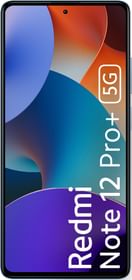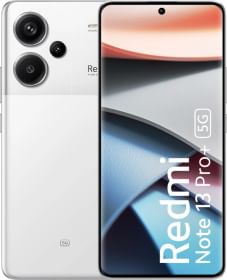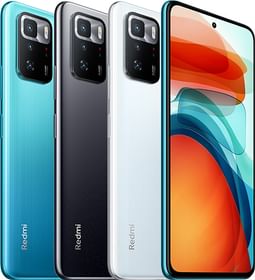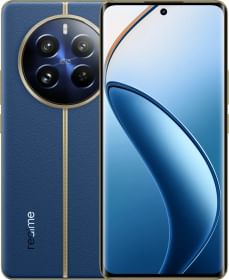In today’s day and age when everyone is running after deadlines and leading a fast-paced life, spending time charging your devices is not a feasible option. This is the reason why smartphones have started getting long-lasting batteries with up to 125W fast charging support and laptops come with a 140V charging facility. But what to do when your device supports wired charging and you are traveling in the metro? To tackle such problems, Elecjet’s new Apollo Ultra Power Bank has been introduced. But is there anything different about it? Is it worth spending on? Read on to find out.
Elecjet’s new Apollo Ultra battery pack uses graphene to speed up charging your devices. Graphene allows this 10,000mAh portable battery to charge from 0 to full in less than 30 minutes. This is about 5 -6 times faster than a conventional power bank. Plug it in when you wake up and it will be ready by the time you have to leave.
What is so special about Graphene?

Graphene is a composition of carbon atoms with a structure that’s only one atomic layer thick. There are several noteworthy characteristics in Graphene including excellent electrical and thermal conductivity, high flexibility, high strength, and low weight.
In fact, graphene is one of the lightest and strongest materials available on Earth — 200x lighter and 6x stronger than steel. It is also a better conducive than copper and Lithium-ion. Therefore, Graphene is able to deliver very high currents. To put things in perspective let me share some states here. A kilogram of Lithium-ion can stores up to 180Wh of energy while a Kilogram of graphene can hold up to 1,000Wh of energy.

Elecjet Apollo Ultra Power: What’s Good & What’s Bad
I’ve been using the Elecjet Apollo Ultra for a almost a month now. I am completely blown away by its charging speeds. The Elecjet Apollo Ultra is a 10,000 mAh power bank that gets charged at 100W and can deliver 87W outputs from both USB-C and USB-A ports.
I also appreciate that little digital display on the front that tells you the information about the battert. It tells you’re the percent charged when charging also with charging speeds. It also tell power left in the tank while charging other devices. I also admire the fact that Appllo Ultra is among rare powerbanks that allows passthrough charging, so you can charge devices while you charge the power bank.

Not only will it get charged superfast, but Apollo Ultra also lasts for more than 2500 charging cycles before the battery drops below 80%. This is roughly 5 times longer than conventional lithium-ion batteries.

Charging speed is the main plus as it gets charged to 99.5% in 27 minutes when connected to a 100W wall charger. Otherwise, it charges slowly reaching 25% in 6.5 minutes, 50% in 13 minutes, and 80% in 21 minutes. To compare I connected the same 100W charger to a 10,000mAh lithium-ion battery and it took over 3 hours to get fully charged. This substantiates the claim by Elecjet that graphene helps charge faster.

A normal 33W fast charger could charge this power bank in 75 minutes which is still 2 times faster than the normal lithium-ion battery connected to a 100W charger.
A slight problem arises when I try to charge 2 devices simultaneously with the power bank. My HP laptop reported that it was being charged at 65W when connected to a USB Type C port and it dropped to just 5W when I plugged in my Oppo smartphone to charge from the USB Type-A port. The company’s claims that Apollo Ultra’s power output of 87W will be divided between 2 devices could not be found true.

When I used Apollo Ultra, it did get slightly warm sometimes. But there’s nothing to worry about as warm is commendable considering Apollo Ultra was drawing more than 5 times the power and thus we can say that graphene did its job of dissipating heat well. Elecjet claims that the power bank comes with safety features and that UL temperature testing has never exceeded 42C.
In terms of weight, the Apollo Ultra is slightly chubbier than the regular battery despite having the same electrons. This is because it houses a large power module needed to handle higher input and power wattages. The company says that it will work on making its next-gen power banks to be the same size and weight as the slower charging predecessors.

Chinese smartphone makers are currently in a race to give huge batteries and maximum fast charging support with their newest launches, for example, Xiaomi 11T Pro features a 5000mAh battery that can charge from 0 to 100 in just 17 minutes with its 120W fast charger. That battery is a dual cell design allowing both halves to charge simultaneously. This is ok for smartphones that cost under 500 dollars and come with the latest chipsets that aren’t limited by constraints of USB-C PD. Elecjet too matches this 17-minute charging feature with its other graphene enriched battery pack, the 5000mAh Apollo Traveller.
This means that Apollo Ultra is not the first graphene hybrid power bank available to buy. Apart from Elecjet, Chargeasap makes a few hybrid battery power banks, one of which comes with more ports, a wireless charging surface, and higher 100W output. It charges from 0 to full in 70 minutes. These hybrid batteries are a very useful step by manufacturers who are on the path to developing tiny, high capacity, and eco-friendly pure graphene batteries that are the future.
This promiessing power bank is currently under crowdfunding and you can check this out from here.


































Who is producing Graphene battery? Because Graphene is still under research. It is very defficult to produced commercially. Kindly mention the name wich is inside this power bank. I didn’t find any name who is producing Graphene commercially!